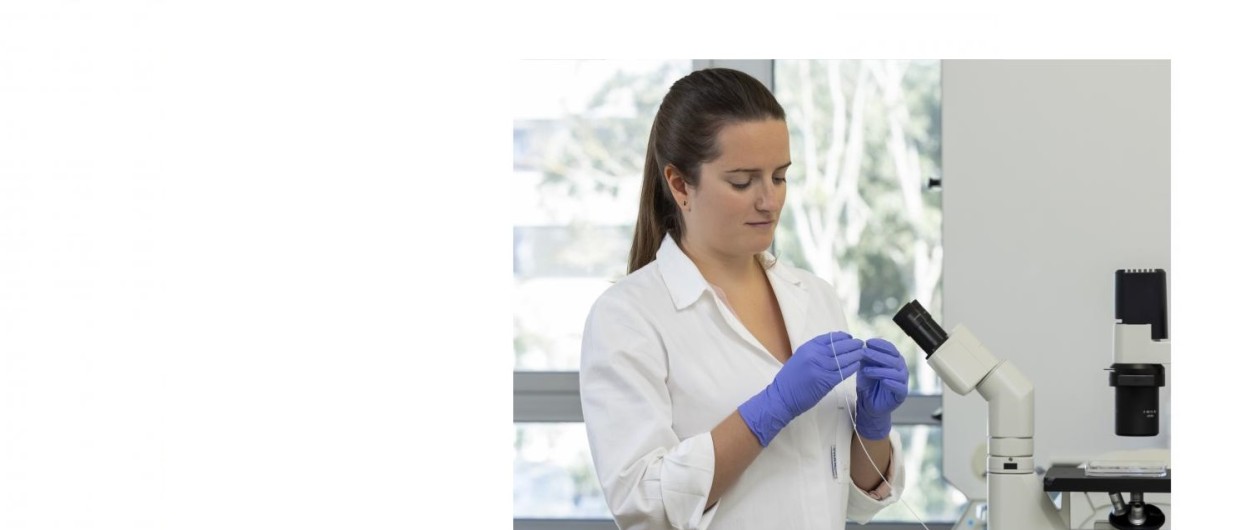Claire Dessalles, winner of the L'Oréal - UNESCO "For Women in Science" award
 Claire Dessalles ©Fondation L’Oréal
Claire Dessalles ©Fondation L’Oréal
 Portrait ©Fondation L’Oréal
Portrait ©Fondation L’Oréal
Claire Dessalles (X2013), a young researcher in the "Cardiovascular Cellular Engineering" Chair, is the winner of the "For Women in Science" prize awarded annually by the L'Oréal Foundation and UNESCO. This prize aims to develop the visibility of women in science based on the quality of their scientific project and their ability to transmit their passion for science. Her work has also been recognised by the 'Young Scientists 2020' award from the Microfluidics and Nanofluidics Research Group.
Claire has approached science as a puzzle and a logical challenge since her first internship at the University of Erlangen-Nuremberg, where she studied synthetic heart micromuscle models. This study of a small biological model allowed her to start as a young researcher at the Laboratory of Hydrodynamics (LadHyX*) in 2018 under the direction of Avin Babataheri, research engineer and Abdul Barakat, Chair holder and CNRS research director. Claire was able to develop an experimental platform that consists of assembling human cells to realistically mimic a blood vessel, including a very small one, which did not exist until now in this field of research.
To make these blood vessels, Claire meticulously assembles tube-shaped cells using a collagen hydrogel as a support, a structure very similar to that used by the human body to maintain the shape of veins and arteries. A flow can then be passed through this blood vessel to mimic the flow of blood.

Figure 1: Schematic of Claire's model artificial vessel and mechanical pressures; credits: Luminal flow actuation generates coupled shear and strain in a microvessel-on-chip, IOP
This platform thus makes it possible to assemble artificial blood vessels that fully correspond to the conditions (cell density, collagen fibres, flow, etc.) desired by the user. It is thus possible to study, under conditions that mimic those of the human body, multiple parameters such as the permeability of the artificial vessel, the forces exerted on the cells or the variations in flow due to interactions between the liquid and the cells of the vessel. Claire used her model to study the reaction of cells to stress forces caused by the pressure of the fluid in the artificial blood vessel. She observed undocumented cellular responses and these observations will be the subject of her next research paper. This versatile and adaptable model is already the basis for further work and collaborations within LadHyX. "Sharing knowledge and opening up research opportunities to other researchers is the beauty of fundamental projects," concludes Claire of her project.
The École Polytechnique is proud to have two of its former students among the winners of the Jeunes Talents France "For Women in Science" prize: Cécile Tran Kiem (X2015) and Alice Marcotte (X2014).
*LadHyX: a joint research unit of CNRS, École Polytechnique - Institut Polytechnique de Paris
>> about the Chair:
With an approach centred on physics and mechano-biology, the "Cardiovascular Cellular Engineering" Chair studies the role of mechanical factors in the formation of cardiovascular diseases. Held since 2010 by Abdul Barakat, this research chair is supported by the AXA Research Fund and finances research projects to study the role of biological mechanical actions in cardiovascular diseases.
 Support l'X
Support l'X